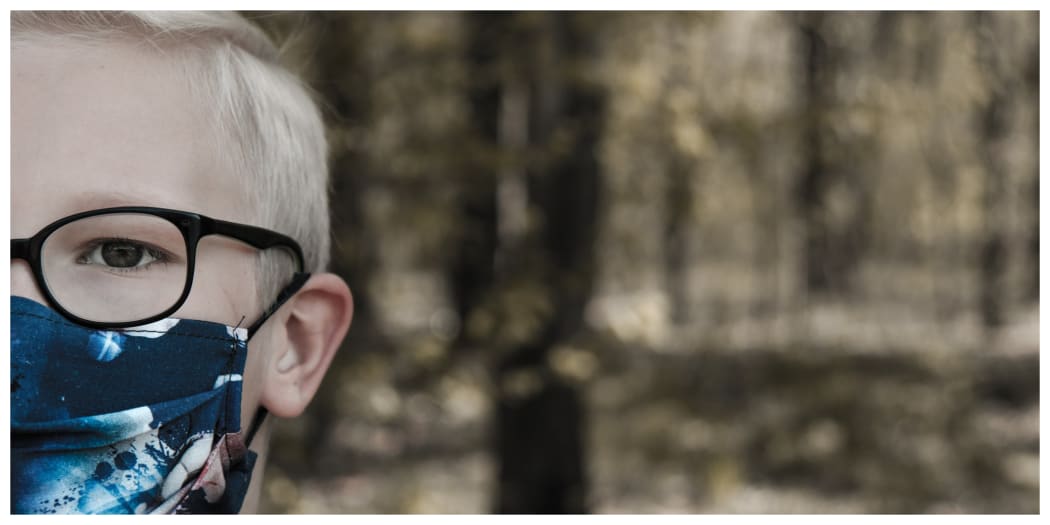As Omicron spreads around the country, how can we minimise risk and maximise resilience among our children?
It's important that parents and teachers are very aware of how they're framing current events, says neuroplasticity educator and parenting expert Nathan Wallis.
“If we catastrophise [the situation], if we're predicting a future that's sounding negative, then we're building into [childrens'] anxiety," he tells Kathryn Ryan.

Photo: befunky.com
“You can choose how you respond; you can respond in an anxious way or you can respond with something like, ‘Asian countries have been wearing masks, and doing this for a long time’.
“Normalise the approach. it's all about framing, you want to frame it in such a way that we're focused on the resilient features, how the communities come together."
When children are panicking, first calm them down, Wallis says.
“That might be a hug, or a cup of Milo or something, and get them calm, and then acknowledge their emotions, whatever they're feeling, you need to say those out loud and acknowledge them if they're anxious.
“I can understand you being anxious, I think a lot of people are anxious at this time. But then you end with a statement that's proactive about what you can do, an action that you can take.
“We've had situations like this before and we've managed to rise to the occasion, every other time. Society seems to be coming together and managing it. So as long as we keep washing your hands and putting our masks on, I'm sure this will pass just like other things do.”
Enhance the events in childrens' lives that remain predictable, he says.
“[Things like] having dinner together at the table or having fish and chips on a Friday night ...things that are not likely to change, and enhance those predictable aspects.”
Frank conversations are also needed, Wallis says.
“As parents, we have to mitigate what's going on in society with the kids. too. I'm having lots of conversations with the children in my whanau around the division between vaccinated and non-vaccinated, and how that's pretty artificial, [mentioning things like] I would have more in common with people that aren't vaccinated than I would have disagreements.”
This helps dispel in the child’s mind the notion that New Zealand is now made up of two opposing societies, he says.
These ideas are particularly important to discuss with teenagers.
“It's easy to start thinking that there’s segregation of those two different groups.
“I think with children you've got to show them that it's much more complex than that. And there's multiple perspectives. And there's many people who are in the middle, we're not very clearly in one group or the other.
“And it's not really the clear division that they see, I think that's just a conversation not being scared to talk to the kids about that.”
Children take their cues from adults, he says.
“We need to be conscious of how we're framing it. And then our actions are consistent with that reframing, our actions are positive.
“I do hear a lot of people, you know, talking doom and gloom, especially about the future about how it's going to be what it's going to look like.
“I think children hearing that adds to that anxiety and that sense of helplessness.”
Taking two-hour breaks from devices is more important for children now than ever, he says.
“[These breaks] take them outside of the risk group for anxiety and depression.
"That's always a good thing to do two hours device-free time because that's really healthy for the brain, it gives them that break.”

